April 2, 2009
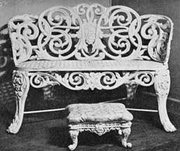
This article notes the popularity of cast-iron in the 19th century, describing the wide variety of items that were made of the material. It originally appeared in the July 1944 issue of American Collector magazine, a publication which ran from 1933-1948 and served antique collectors and dealers.
In the broadside political caricatures which were produced and circulated quite freely in America from the beginning of the Jackson era down to the administration of Andrew Johnson, we find … (continue reading)
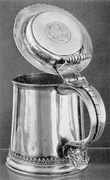
This article describes silversmith Peter Quintard’s life and business, also noting his family’s immigration history and including the text of his will. It originally appeared in the December 1941 issue of American Collector magazine, a publication which ran from 1933-1948 and served antique collectors and dealers.
Today if a bored passenger on a Boston-bound express happens to glance out of the car window as his train thunders past South Norwalk and across the bridge which spans the … (continue reading)
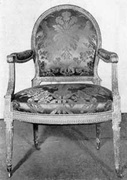
This article details the furniture items used by George Washington, from the elaborate furnishings chosen for him by Lady Kitty Duer and Mrs. Osgood to the desk he chose himself. It originally appeared in the February 1941 issue of American Collector magazine, a publication which ran from 1933-1948 and served antique collectors and dealers.
“Great rejoicing in New York on the arrival of General Washington. Previous to his coming, Uncle Walter’s house in Cherry Street was taken for … (continue reading)
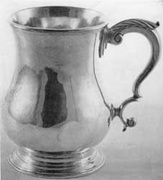
This article on William Gilbert, Jr. notes the New York silversmith’s family life, craft, and influence, as well as his extensive military, political, and community involvement in the 18th century. It originally appeared in the July 1941 issue of American Collector magazine, a publication which ran from 1933-1948 and served antique collectors and dealers.
When Gerrit Cosine, or Cozyn as the name was spelled on the old Dutch records, died in 1769, he bequeathed to his daughter Catherine … (continue reading)

This article details the history of 18th-century English porcelain manufacturers, such as Chelsea, Bow, and Derby, and notes some of the most popular items produced. It originally appeared in the November 1941 issue of American Collector magazine, a publication which ran from 1933-1948 and served antique collectors and dealers.
Whilst much thought and attention has been given to the purely decorative figures and objects produced by the 18th-Century English porcelain factories, little study has been given to … (continue reading)
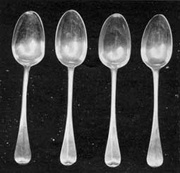
This article details the history of the life and work of silversmith William Cario and his son of the same name. Little information about the two men had been previously known in the years before this article was published. It originally appeared in the September 1941 issue of American Collector magazine, a publication which ran from 1933-1948 and served antique collectors and dealers.
Although the work of the early American silversmith William Cairo had been well and … (continue reading)
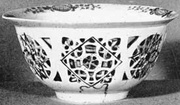
This article discusses the development of porcelain, from materials to designs to markings. It originally appeared in the June 1941 issue of American Collector magazine, a publication which ran from 1933-1948 and served antique collectors and dealers.
When around 1710 the Saxon Court alchemist, Johann Friedrich Boettger, instead of finding gold, discovered the method of making porcelain, he succeeded in his task in a way unforeseen by himself and by his princely employer. For in the third and fourth decade … (continue reading)

By Marshall Davidson
This article, written by the then-Associate Curator of the American Wing of the Metropolitan Museum of Art, notes the Egyptian influence on ancient glass (especially in Rome), the origins of blown and pressed glass, and the similarities between ancient Egyptian glass and more modern American styles. It originally appeared in the August 1942 issue of American Collector magazine, a publication which ran from 1933-1948 and served antique collectors and dealers.
At this moment of writing Egypt’s most recent … (continue reading)
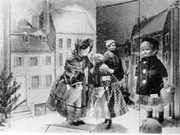
This article argues that collectors should have fun and arrange their dolls for display rather than keeping them behind glass cases, offering ideas for interesting displays. It originally appeared in the January 1945 issue of American Collector magazine, a publication which ran from 1933-1948 and served antique collectors and dealers.
This is a most unorthodox treatise on dolls as we are neither collectors nor authorities on their histories, but for the past three … (continue reading)
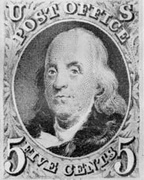
This article describes the famous artwork used for stamp designs, such as paintings and sculptures, noting which pieces of art were effective as stamps and which were not. It originally appeared in the July 1943 issue of American Collector magazine, a publication which ran from 1933-1948 and served antique collectors and dealers.
Paintings and sculpture galore have been reproduced on postage stamps, sort of an Everyman’s art gallery. But this, of course, does not mean that … (continue reading)
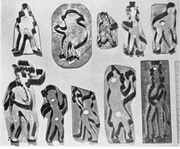
This article discusses Pennsylvania-Dutch cookie-cutters, considered a form of folk art, noting their evolution, cultural significance, and the variety of themes represented. It originally appeared in the January 1942 issue of American Collector magazine, a publication which ran from 1933-1948 and served antique collectors and dealers.
It might seem that so untractable a medium as cooky dough would lend itself to few varieties of design, but among the homely articles of the old-time Pennsylvania-Dutch household, none … (continue reading)
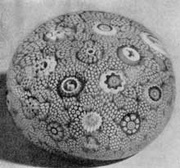
This article discusses the difference between rare and common paperweights, noting ways that one can tell if a paperweight is a genuine antique or an imitation. It originally appeared in the July 1943 issue of American Collector magazine, a publication which ran from 1933-1948 and served antique collectors and dealers.
“I have a number of books which belonged to my grandfather. They are very old, and I am quite sure they are valuable. Will you be so … (continue reading)
April 1, 2009

This article describes various silver items owned by families in Virginia prior to 1800, such as snuff boxes, watches, and plate. It originally appeared in the April 1941 issue of American Collector magazine, a publication which ran from 1933-1948 and served antique collectors and dealers.
The exhibition of silver owned by families of Virginia, made prior to 1800, recently held at the Virginia Museum of Fine Arts, Richmond, throws factual light on the silver owned … (continue reading)

This article notes the process, patterns, and characteristics of blown glass and describes popular miniature blown objects, such as mini decanters and tumblers. It originally appeared in the August 1942 issue of American Collector magazine, a publication which ran from 1933-1948 and served antique collectors and dealers.
Before treating in detail of the miniature or toy pieces of Blown Molded, or as it still known, “blown three-mold” glass, it might be well to become better acquainted with … (continue reading)
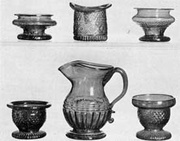
This article describes items that were to be sold at an auction shortly after its original publication, noting which items are rare and where they were found. It originally appeared in the April 1941 issue of American Collector magazine, a publication which ran from 1933-1948 and served antique collectors and dealers.
The American glass collection formed by the late William T. H. Howe of Cincinnati must be counted among the most outstanding in general interest of any … (continue reading)















 How We Used to Give Thanks in Wartime
How We Used to Give Thanks in Wartime Treasures of the Incomparable Pforzheim Jewelry Museum
Treasures of the Incomparable Pforzheim Jewelry Museum Behind the Scenes at the Smithsonian
Behind the Scenes at the Smithsonian Naughty Nuns, Flatulent Monks, and Other Surprises of Sacred Medieval Manuscripts
Naughty Nuns, Flatulent Monks, and Other Surprises of Sacred Medieval Manuscripts Mechanical Movements of the Cold War: How the Soviets Revolutionized Wristwatches
Mechanical Movements of the Cold War: How the Soviets Revolutionized Wristwatches Mari Tepper: Laying it on the Line
Mari Tepper: Laying it on the Line Nice Ice: Valerie Hammond on the Genteel Charm of Vintage Canadian Costume Jewelry
Nice Ice: Valerie Hammond on the Genteel Charm of Vintage Canadian Costume Jewelry How Jim Heimann Got Crazy for California Architecture
How Jim Heimann Got Crazy for California Architecture Modernist Man: Jock Peters May Be the Most Influential Architect You've Never Heard Of
Modernist Man: Jock Peters May Be the Most Influential Architect You've Never Heard Of Meet Cute: Were Kokeshi Dolls the Models for Hello Kitty, Pokemon, and Be@rbrick?
Meet Cute: Were Kokeshi Dolls the Models for Hello Kitty, Pokemon, and Be@rbrick? When the King of Comedy Posters Set His Surreal Sights on the World of Rock 'n' Roll
When the King of Comedy Posters Set His Surreal Sights on the World of Rock 'n' Roll How One Artist Makes New Art From Old Coloring Books and Found Photos
How One Artist Makes New Art From Old Coloring Books and Found Photos Say Cheese! How Bad Photography Has Changed Our Definition of Good Pictures
Say Cheese! How Bad Photography Has Changed Our Definition of Good Pictures Middle Earthenware: One Family's Quest to Reclaim Its Place in British Pottery History
Middle Earthenware: One Family's Quest to Reclaim Its Place in British Pottery History Fancy Fowl: How an Evil Sea Captain and a Beloved Queen Made the World Crave KFC
Fancy Fowl: How an Evil Sea Captain and a Beloved Queen Made the World Crave KFC